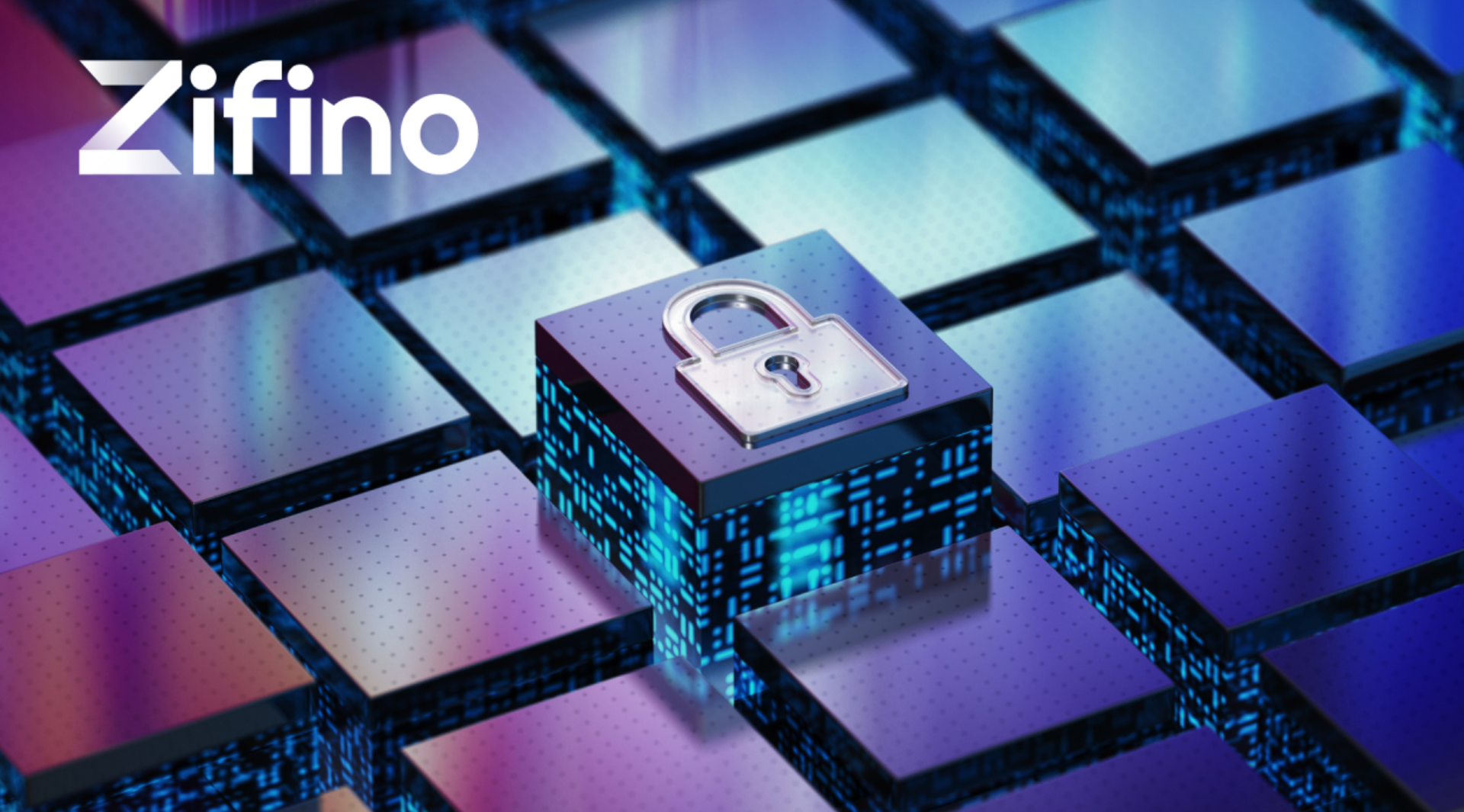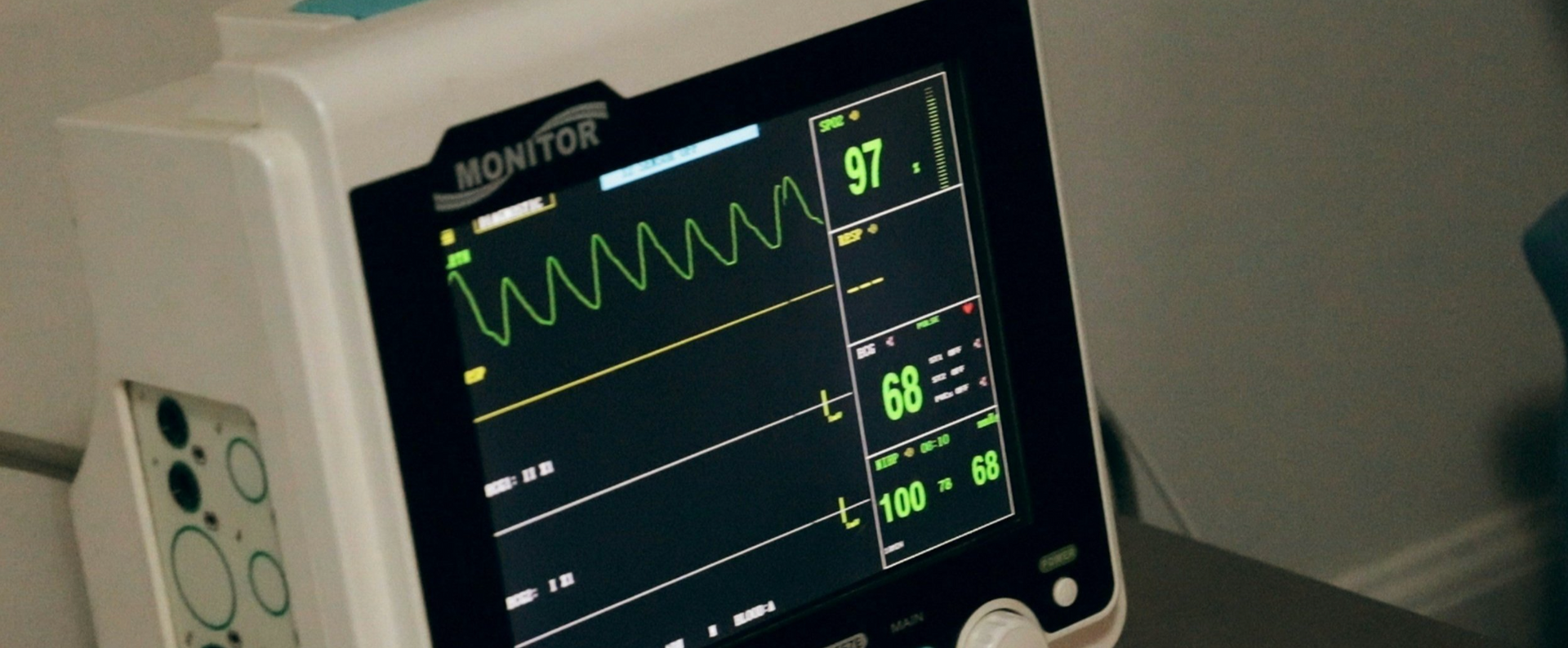Blog

February 26, 2025
The cybersecurity landscape is poised for significant transformation in 2025. At Zifino, we have analyzed emerging trends and developments to provide our top cybersecurity predictions for the coming year. 1. Proliferation of AI-Driven Cyber Attacks Artificial Intelligence (AI) is a double-edged sword in cybersecurity. While it enhances defense mechanisms, it also empowers adversaries to launch more sophisticated attacks. In 2025, we anticipate a surge in AI-driven cyber threats, including automated phishing schemes and advanced malware capable of evading traditional security measures. 2. Growth and Rapid Expansion of Attack Surface The proliferation of many systems (both hardware and software) and increase of Internet of Things (IoT) devices expands the digital attack surface, offering new entry points for cyber threats. Ensuring the security of these systems will be paramount, requiring stringent access controls and continuous monitoring. 3. Increased Regulation and Compliance Requirements Governments worldwide are enacting stricter cybersecurity regulations to protect critical infrastructure and personal data. In 2025, businesses should prepare for enhanced compliance obligations, necessitating robust security frameworks and comprehensive risk management strategies. 4. Evolution of Ransomware Tactics Ransomware attacks are expected to become more targeted and destructive. Attackers may employ AI to identify high-value targets and demand higher ransoms, while also utilizing data exfiltration and extortion techniques to increase pressure on victims. 5. Scrutiny of Supply Chains The interconnectedness of modern businesses means that vendors and supply chains will also come under sharp scrutiny. Supply chain attacks (the practice of compromising upstream systems is more likely when plethora of typically smaller and poorly defended vendors are compromised to gain access to downstream cybersecurity victims. 6. Integration of AI in Security Operations To combat increasingly sophisticated threats, organizations will integrate AI-driven tools into all aspects of cybersecurity, including ASM tools, Security Operations Centers (SOCs). These AI "co-pilots" will assist in threat detection, response automation, and reducing false positives, enhancing overall security posture. 7. Emphasis on Zero Trust Architecture The Zero Trust security model, which operates on the principle of "never trust, always verify," will gain prominence. Organizations will adopt this approach to mitigate insider threats and secure remote work environments, ensuring that all access requests are continuously authenticated and authorized. 8. Rise of Cyber Insurance Scrutiny As cyber threats escalate, insurers will impose more stringent requirements on policyholders. Businesses will need to demonstrate robust cybersecurity measures to obtain coverage, prompting a reevaluation of existing security practices. 9. Social Media as a Vector for Cyber Exploitation Cybercriminals will increasingly exploit social media platforms to disseminate misinformation, conduct phishing attacks, and impersonate individuals. Enhanced vigilance and user education will be essential to counter these threats. 10. Growing Importance of Cybersecurity Talent Development The cybersecurity skills gap remains a critical challenge. In 2025, organizations will invest more in training and developing talent to build resilient security teams capable of navigating the evolving threat landscape. About Zifino Zifino is an AI-driven cybersecurity solution designed from the ground up, incorporating human-in-the-loop penetration testing for comprehensive results. Requiring no customer logins, credentials, or downloads, Zifino provides super-fast reconnaissance and deep penetration testing to identify and mitigate an organization’s cybersecurity risks. Discover more at www.zifino.com Sources "2025 Cyber Security Predictions: The Rise of AI-Driven Attacks, Quantum Threats, and Social Media Exploitation." Check Point Blog. Retrieved from https://blog.checkpoint.com/security/2025-cyber-security-predictions-the-rise-of-ai-driven-attacks-quantum-threats-and-social-media-exploitation/ "Battle Begins to Stop Quantum Computers Smashing Cyber Defenses." The Times. Retrieved from https://www.thetimes.co.uk/article/battle-begins-to-stop-quantum-computers-smashing-cyber-defences-rzmlwqw7f "Cybersecurity Predictions for 2025." Huntsman Security Blog. Retrieved from https://huntsmansecurity.com/blog/cyber-security-predictions-for-2025/ "5 Cybersecurity Predictions for 2025." Morefield Blog. Retrieved from https://morefield.com/blog/5-cybersecurity-predictions-for-2025/ "BeyondTrust Releases Cybersecurity Predictions for 2025 and Beyond." BeyondTrust Press Release. Retrieved from https://www.beyondtrust.com/press/beyondtrust-releases-cybersecurity-predictions-for-2025-and-beyond

February 26, 2025
As companies embrace digital transformation, they increasingly depend on proprietary technologies and data that requires robust cybersecurity measures to safeguard intellectual property (IP). Zifino and Foley & Lardner LLP collaborate here to share insights on the intersection of IP and cybersecurity, exploring strategies to protect valuable assets from cyber threats while fostering innovation. Executing a cohesive strategy that combines IP and cybersecurity perspectives provides multi-tiered operational and legal protection. The Convergence of IP and Cybersecurity IP is a core asset for many companies to protect their competitive differentiators. A comprehensive IP strategy often involves leveraging several different forms of IP tools, including but not limited to trade secrets and patents, to protect proprietary assets such as AI models and internal strategy information. However, as these assets are digitized and implemented across varied architectures, they become prime targets for cyberattacks. A comprehensive cybersecurity strategy is essential to protect IP, ensuring that sensitive data and proprietary innovations are shielded from unauthorized access, theft, or misuse. Key Risks to IP in the Digital Age Cyber Espionage : Competitors and threat actors may seek access to proprietary information, particularly around R&D, AI algorithms, and confidential client data. Insider Threats : Employees and third-party partners with access to sensitive information pose potential risks to IP security if appropriate controls are not in place. Supply Chain Vulnerabilities : IP protection is only as strong as the weakest link in a company’s supply chain. Vendors and partners must adhere to stringent cybersecurity standards. Proactive IP and Cybersecurity Measures 1. Secure Digital Infrastructure Zifino’s Approach: Leveraging advanced threat detection, Zifino’s tools monitor for anomalies and provide actionable threat intelligence, helping to secure valuable IP against evolving cyber threats. By integrating AI-driven defenses, companies can preemptively address risks to IP. 2. Legal Protections and Compliance Foley & Lardner’s Insight: IP protections are only as strong as the legal frameworks supporting them, and those legal frameworks must be use case-specific, accounting for exactly who owns or has obligations to protect each IP asset. By aligning cybersecurity practices with the realities of their use case and corresponding IP considerations, companies can reinforce their protection strategies. Any given use case can require a unique mapping of IP tools, such as confidentiality obligations, licensing terms, and indemnities, to how data and IP is managed throughout a technology’s platform. Precise use of such IP tools, as well as clear cybersecurity standards in contracts, add an essential legal layer to IP security. 3. Access Control and Insider Awareness Joint Strategy: Companies should implement stringent access controls to ensure only authorized personnel can access sensitive IP. Combined with regular training on IP and cybersecurity policies, this can reduce insider threats and accidental data breaches. The Future of IP and Cybersecurity As technology advances, companies will need to adapt their IP and cybersecurity strategies to address new and emerging threats. Together, Zifino and Foley & Lardner encourage organizations to approach IP protection as a comprehensive strategy that combines legal safeguards with state-of-the-art cybersecurity. Conclusion IP and cybersecurity are two sides of the same coin in the digital era. By combining advanced cybersecurity tools with strong legal protections, companies can safeguard their most valuable assets. With the right approach, organizations can protect their innovations, foster secure partnerships, and drive sustainable growth. About Zifino Zifino is an AI-driven cybersecurity solution designed from the ground up, incorporating human-in-the-loop penetration testing for comprehensive results. Requiring no customer logins, credentials, or downloads, Zifino provides super-fast reconnaissance and deep penetration testing to identify and mitigate an organization’s cybersecurity risks. Discover more at www.zifino.com About Foley & Lardner Foley & Lardner LLP is a preeminent international law firm that stands at the nexus of the Energy, Health Care & Life Sciences, Innovative Technology, and Manufacturing sectors. Our 1,100 lawyers across 26 offices worldwide partner on the full range of engagements from corporate counsel to intellectual property and litigation support, providing clients with a one-team solution to all their needs. For nearly two centuries, Foley has maintained its commitment to the highest level of innovative legal services and to the stewardship of our people, clients, and communities served. www.foley.com

February 26, 2025
Cybersecurity is not just about protecting data—it’s about protecting your bottom line. Businesses that fail to invest in adequate security measures risk more than just their reputation. Here are the top five ways cybersecurity directly impacts your cash flow: 1. Cost of Data Breaches Data breaches are expensive. The average cost of a breach in 2023 was $4.45 million.* When a breach occurs, businesses must cover legal fees, fines, and the cost of repairing the damage. For small and medium-sized enterprises (SMEs), a breach could be financially devastating. 2. Lost Revenue from Downtime A cyberattack can bring your operations to a grinding halt. Whether it’s a ransomware attack or server compromise, every minute of downtime costs money. Customers may turn to competitors if your business can’t deliver services promptly, leading to a significant drop in revenue. 3. Customer Trust and Retention A breach erodes trust. Customers expect their data to be secure, and a failure to protect it can result in lost business. The cost of acquiring new customers is always higher than retaining existing ones, so any loss in customer trust can severely impact long-term revenue. 4. Compliance Fines and Legal Penalties Regulations like GDPR, HIPAA, and SOC2 impose heavy fines on companies that fail to protect sensitive data. Non-compliance can lead to penalties that strain your cash flow. Investing in proactive cybersecurity measures ensures that you meet these regulations and avoid hefty fines. 5. Increased Operational Costs After a breach, businesses often face increased costs in bolstering security, repairing systems, and managing public relations crises. These unplanned expenses can disrupt cash flow, making it harder to maintain profitability in the short term. Conclusion Investing in robust cybersecurity solutions protects more than just your data—it safeguards your cash flow. Proactive security measures help prevent costly breaches, avoid downtime, and maintain customer trust, ultimately preserving your financial health.

February 26, 2025
Securing your network isn’t just a priority—it’s a necessity. As cybercriminals become more sophisticated, businesses of all sizes are increasingly at risk. Whether you’re running a small business or managing a large enterprise, proactive cybersecurity measures are essential to safeguard your digital assets. Here are the five most important steps every organization should take to protect their network. 1. Conduct Regular Vulnerability Scanning Your network is constantly evolving, and so are the threats it faces. Cybercriminals are always searching for vulnerabilities, so staying one step ahead is crucial. Regular vulnerability scanning helps identify potential weaknesses before they can be exploited. These scans should cover everything from misconfigured firewalls to outdated software, ensuring you maintain a clear view of your network’s security posture. 2. Implement Strong Access Controls Weak or compromised credentials are one of the most common ways attackers gain access to networks. To minimize this risk, implementing strong access controls is essential. This includes enforcing multi-factor authentication (MFA), using strong passwords, and adhering to the principle of least privilege, meaning users only have the access they need to do their jobs. Role-based access control (RBAC) systems can also help ensure sensitive data is only accessible to authorized individuals, reducing the risk of accidental or malicious breaches. 3. Monitor Your Network Continuously Cyber threats don’t follow a predictable schedule—they can strike at any time. That’s why continuous monitoring is key to maintaining network security. Real-time monitoring tools can alert your team to unusual activity, enabling a rapid response before any serious damage occurs. Monitoring also helps track and assess potential threats, allowing you to act before they escalate. 4. Regularly Patch and Update Software Outdated software is often exploited by cybercriminals to gain access to networks. Regularly patching and updating your systems is a simple but highly effective way to close off potential vulnerabilities. By automating patch management, you can ensure that all devices connected to your network are running the latest, most secure versions of their software. This proactive approach helps prevent attackers from exploiting known vulnerabilities. 5. Train Your Team on Cybersecurity Awareness Your employees can be your strongest defense—or your weakest link. Even with advanced security tools in place, human error often opens the door to cyberattacks. Phishing schemes, social engineering, and insider threats rely heavily on exploiting untrained employees. That’s why regular cybersecurity awareness training is vital. Your team should be able to identify phishing emails, recognize suspicious links, and understand secure password practices. A well-informed team is an integral part of your overall defense strategy. Conclusion Securing your network is an ongoing effort, and no single solution will cover all the bases. However, by focusing on regular vulnerability scanning, strong access controls, continuous monitoring, timely patching, and employee training, you can significantly reduce the risk of cyberattacks and strengthen your organization’s security posture.

February 26, 2025
Understanding the cybersecurity tools and techniques available to protect your organization is half of the battle. Two fundamental processes—Vulnerability Scanning (VA) and Penetration Testing (PT)—are often mentioned together, but they serve distinct purposes. To develop a robust security stance, it's important to grasp the differences and know when to use each. What is Vulnerability Scanning (VA)? Vulnerability Scanning is an automated process that identifies potential vulnerabilities in your network, systems, and applications. This process involves using specialized software to scan your environment, looking for weaknesses such as outdated software, open ports, misconfigurations, and known vulnerabilities. Key Features of Vulnerability Scanning: Automated Process: Vulnerability scanning is typically automated, making it a time-efficient way to regularly check for security flaws across your entire network. Broad Coverage: This method provides a comprehensive overview of your organization's vulnerabilities, covering everything from servers and workstations to web applications and databases. Regular Monitoring: Vulnerability scanning can be scheduled to run regularly, allowing you to continuously monitor your environment for new vulnerabilities as they emerge. What is Penetration Testing (PT)? Penetration Testing is a more targeted and manual approach to security testing. Often referred to as “ethical hacking,” penetration testing involves simulating an actual cyberattack on your systems to identify exploitable vulnerabilities. A skilled tester will use various techniques to attempt to breach your defenses, providing a real-world assessment of your security posture. Key Features of Penetration Testing: Manual and Targeted: Unlike vulnerability scanning, penetration testing is typically performed by experienced security professionals who manually attempt to exploit vulnerabilities in your systems. Real-World Scenarios: Penetration tests simulate real-world attack scenarios, providing insights into how an attacker might breach your defenses and what the impact would be. In-Depth Analysis: Penetration testing provides a deep dive into your security posture, often uncovering vulnerabilities that automated scans might miss, such as logic flaws or issues related to human factors. When to Use Vulnerability Scanning vs. Penetration Testing Understanding when to use vulnerability scanning versus penetration testing is key to maintaining a strong cybersecurity strategy. Vulnerability Scanning: Use VA for regular, ongoing assessments of your environment. It's an essential part of maintaining a strong security baseline and ensuring that known vulnerabilities are quickly identified and addressed. It's especially useful for maintaining compliance with industry standards and regulations. Penetration Testing: Use PT when you need a more thorough assessment of your security posture, especially before launching new systems or after significant changes to your environment. Penetration testing is also valuable for testing the effectiveness of your security controls and for identifying complex vulnerabilities that automated scans might overlook. Why Both Are Essential While vulnerability scanning and penetration testing serve different purposes, they are complementary tools in your cybersecurity arsenal. Regular vulnerability scans help ensure that your environment remains secure over time, while periodic penetration tests provide deeper insights into your system’s resilience against real-world attacks. By incorporating both VA and PT into your cybersecurity strategy, you can better protect your organization from a wide range of threats, ensuring that your defenses are robust, up-to-date, and capable of withstanding potential attacks. How Zifino Can Help At Zifino, we specialize in cybersecurity solutions tailored for the manufacturing sector. Our advanced vulnerability scanning and human-in-the-loop penetration testing provide comprehensive insights into your attack surface, helping you secure your digital assets efficiently and affordably. Don't wait for a cyberattack to expose your vulnerabilities. Proactively manage your attack surface and protect your manufacturing operations with Zifino. Get in touch with us today to learn more about our layered solution to cybersecurity and schedule a demo! #Manufacturing #CyberSecurity #AttackSurfaceManagement #VulnerabilityScanning #IoTSecurity #NetworkProtection #CyberRisk #CyberPosture

February 26, 2025
In an ever-changing cloud-based world, maintaining a strong cyber posture is a necessity. Learning to establish cyber stability is not just about protecting data; it’s about ensuring business continuity, safeguarding your reputation, and maintaining customer trust. What is Cyber Posture? Cyber posture refers to the overall security status of an organization’s software, networks, and devices. It encompasses the organization’s readiness and ability to protect against, detect, and respond to cyber threats. A proactive cyber posture means not only defending against current threats but also detecting and preparing for future ones. The Key to a Sound Cyber Strategy is a Proactive Approach Taking control of your cyber posture involves a continuous, proactive approach to managing and strengthening your organization’s security measures. This process is crucial for several reasons: Evolving Threat Landscape: Cyber threats are constantly evolving. New vulnerabilities are discovered daily, and attackers are becoming increasingly sophisticated in their methods. A passive approach leaves your organization vulnerable to these emerging threats. Comprehensive Asset Management: Understanding and managing all of your digital assets—from on-premise servers to cloud-based applications—is critical. Active control ensures that every asset is accounted for, monitored, and protected. Regulatory Compliance: With stringent cybersecurity regulations in place, maintaining an active cyber posture helps ensure that your organization meets all necessary compliance standards, reducing the risk of penalties and data breaches. Steps to Enhance Your Cyber Presence Continuous Monitoring and Assessment: Regularly monitor and assess your network for vulnerabilities. Use tools like vulnerability scanning to identify potential weak points in your system. This allows you to address security gaps before they are found by others. Implement a Zero Trust Architecture: Adopt a Zero Trust model, where no one inside or outside your network is trusted by default. This minimizes the risk of unauthorized access and ensures that all users and devices are continuously verified. Regular Employee Training: Human error remains one of the biggest risks in cybersecurity. Regular training ensures that employees are aware of the latest threats and understand their role in maintaining the organization’s security. Incident Response Planning: Develop and regularly update your incident response plan. This plan should outline the steps to be taken in the event of a security breach, minimizing damage and ensuring a swift recovery. How Zifino Can Help At Zifino, we specialize in cybersecurity solutions tailored for the manufacturing sector. Our advanced vulnerability scanning and human-in-the-loop penetration testing provide comprehensive insights into your attack surface, helping you secure your digital assets efficiently and affordably. Don't wait for a cyberattack to expose your vulnerabilities. Proactively manage your attack surface and protect your manufacturing operations with Zifino. Get in touch with us today to learn more about our solutions and schedule a demo! #Manufacturing #CyberSecurity #AttackSurfaceManagement #VulnerabilityScanning #IoTSecurity #NetworkProtection #CyberRisk #CyberPosture

February 26, 2025
In the manufacturing industry, cybersecurity is more critical than ever. As manufacturing processes become increasingly digitized, the attack surface expands, making it vital to secure every external-facing asset. What is Attack Surface Management (ASM)? ASM is the continuous process of identifying, monitoring, and managing potential cyber threats to your network's external-facing assets. For manufacturers, this includes everything from IoT devices on the shop floor to cloud-based systems managing production data. Why Vulnerability Scanning Matters Vulnerability scanning is a key component of ASM. By regularly scanning your network for vulnerabilities, you can: Identify Weak Points : Detect exposed ports, outdated software, and misconfigured systems. Prevent Breaches : Address security flaws before they are exploited by attackers. Ensure Compliance : Meet industry regulations and standards for cybersecurity. How Zifino Can Help At Zifino, we specialize in cybersecurity solutions tailored for the manufacturing sector. Our advanced vulnerability scanning and human-in-the-loop penetration testing provide comprehensive insights into your attack surface, helping you secure your digital assets efficiently and affordably. Don't wait for a cyberattack to expose your vulnerabilities. Proactively manage your attack surface and protect your manufacturing operations with Zifino. Get in touch with us today to learn more about our ASM solutions and schedule a demo! #Manufacturing #CyberSecurity #AttackSurfaceManagement #VulnerabilityScanning #IoTSecurity #NetworkProtection #CyberRisk

February 26, 2025
Attention Car Dealership Owners! As the automotive sales landscape becomes increasingly digital, the security of your data and systems is paramount. Cyber threats targeting customer information and financial transactions are on the rise. Here’s how Zifino can drive the cybersecurity aspect of your business forward: Protect Customer Data Zifino offers state-of-the-art cybersecurity solutions to safeguard sensitive customer data and minimize your risks, ensuring your dealership remains a trusted name in the automotive industry. Secure Online Transactions With more customers opting for online purchases and financing, Zifino detects vulnerabilities so every transaction is secure from external cyber threats, protecting both your customers and your reputation. Safeguard Your Network Keep your dealership’s network and connected systems protected against cyber attacks with Zifino’s comprehensive cybersecurity scans and human penetration tests, preventing operational disruptions and data breaches. Ensure Compliance Navigate the complexities of regulatory requirements with ease. Zifino helps you maintain compliance with data protection laws, saving you from potential fines and legal issues. Enhance Customer Confidence By partnering with Zifino, you demonstrate a proactive approach to cybersecurity, enhancing customer confidence and loyalty, which are crucial for repeat business and referrals. Advanced Attack Surface Management In today’s connected world, your dealership’s digital footprint expands with every new digital tool and online service you deploy. Zifino’s advanced attack surface management identifies and secures these expanding entry points, dramatically reducing the risk of unauthorized access and cyber attacks. ROI of Vulnerability Assessments and Penetration Testing Investing in Zifino’s vulnerability assessments and penetration testing offers substantial returns. These proactive measures not only prevent costly data breaches and downtime but also optimize your cybersecurity investments by pinpointing specific weaknesses. This targeted approach saves you significant resources in the long run, ensuring that your cybersecurity measures are as efficient and effective as possible. Step up your dealership’s cybersecurity with Zifino. Secure, innovate, and drive forward with confidence. Your dealership’s success and security are our top priority. #CarDealership #Cybersecurity #AutomotiveSecurity #Zifino #DataProtection #DigitalTransformation #AttackSurfaceManagement #VulnerabilityAssessment #PenetrationTesting



